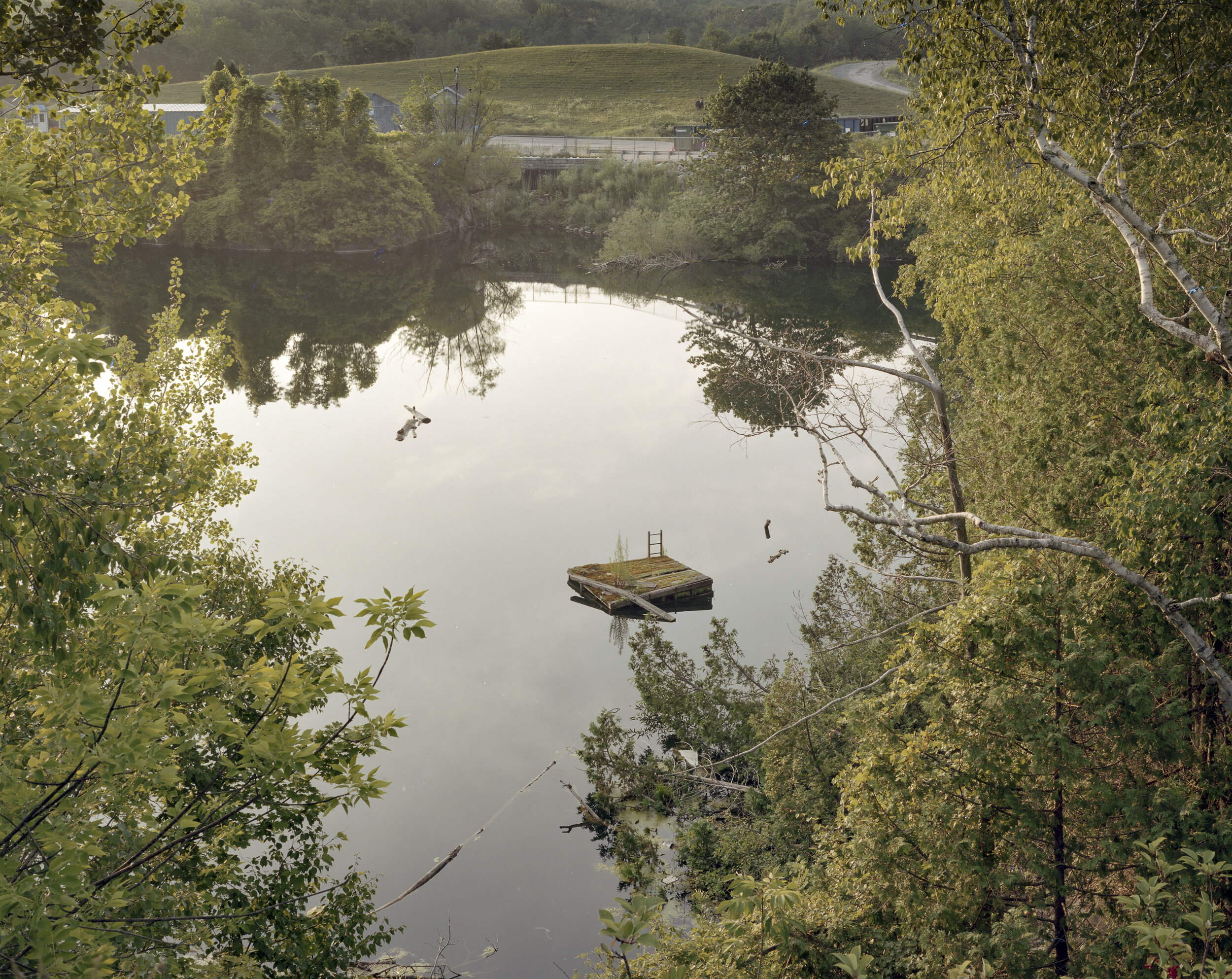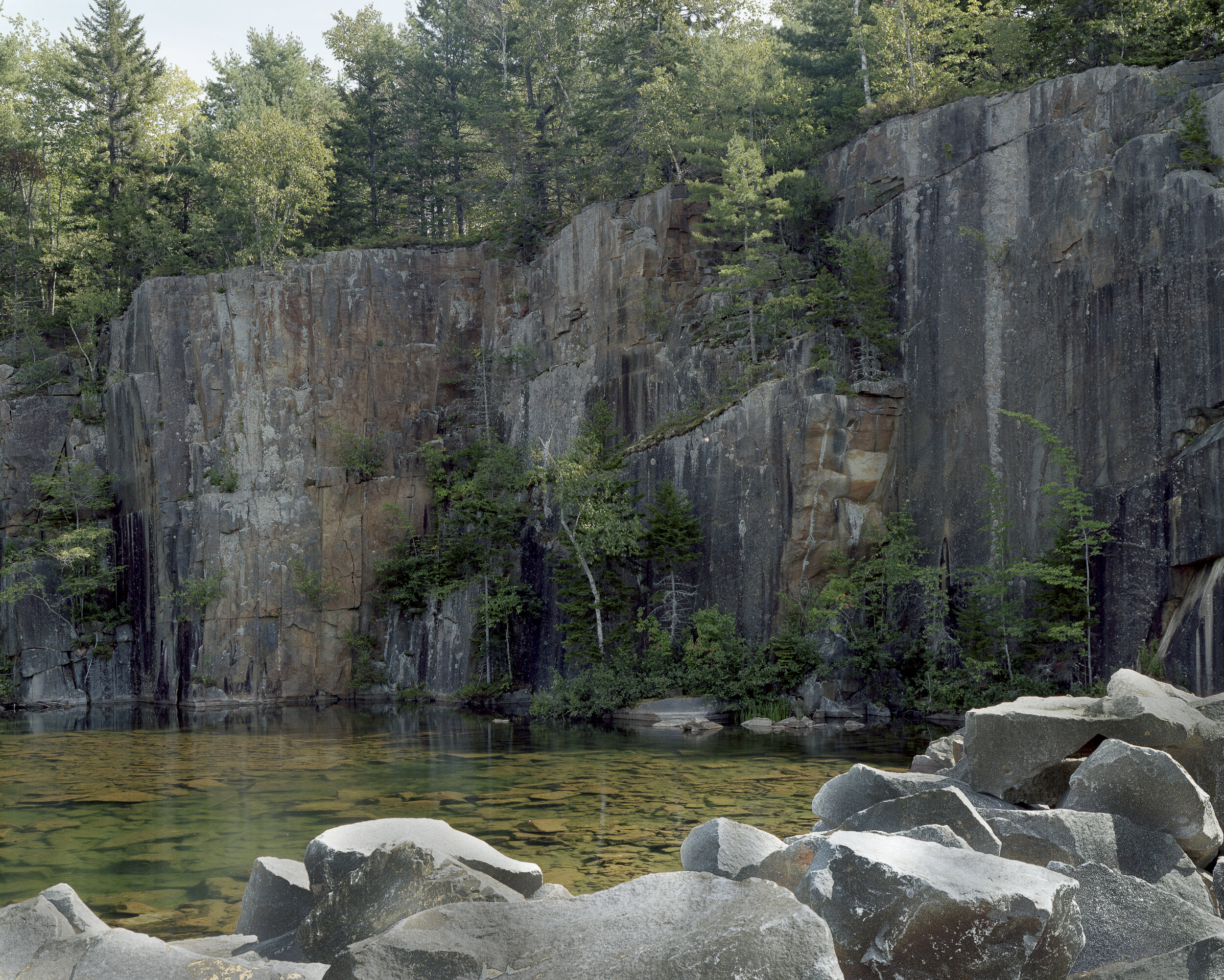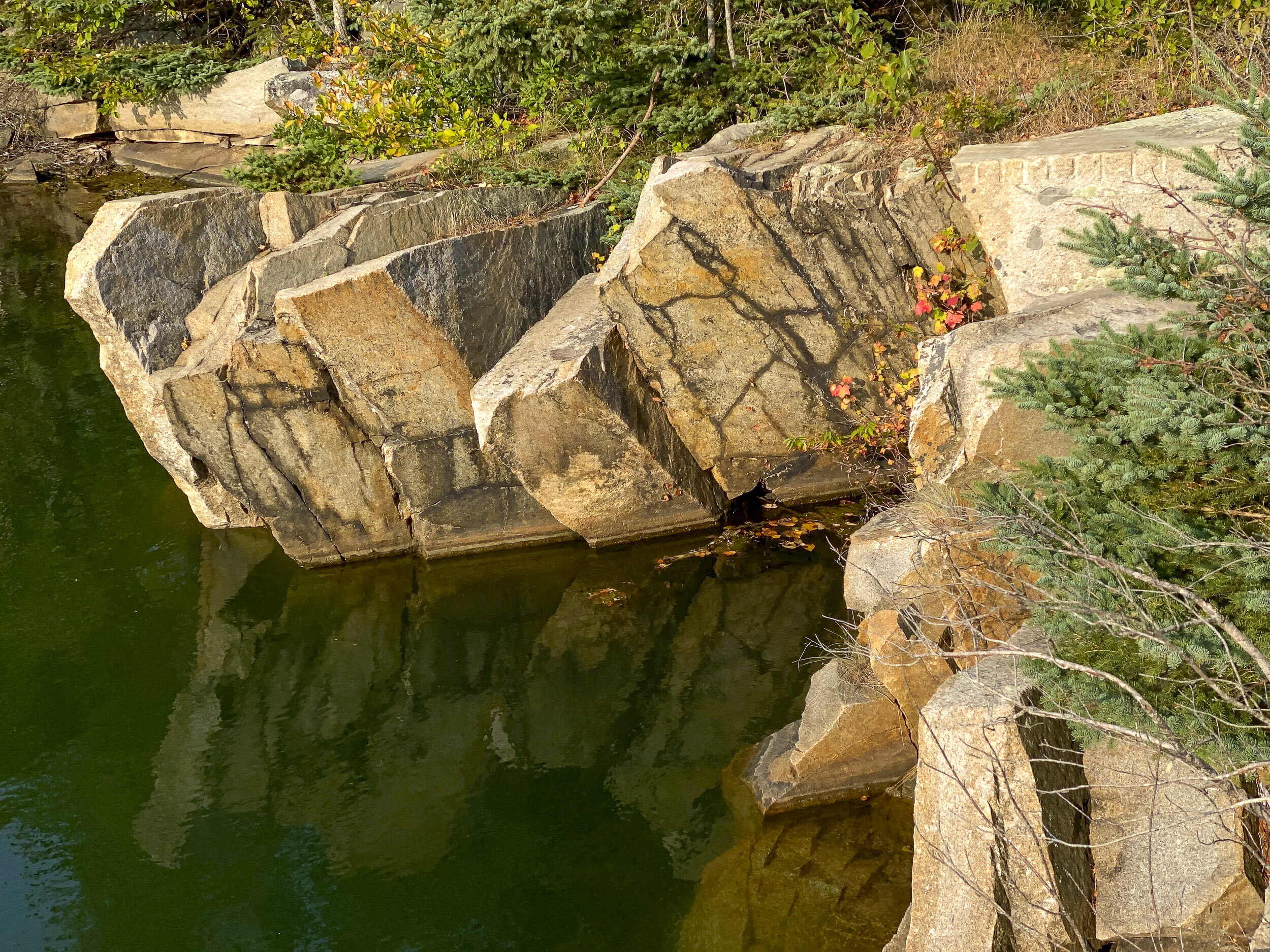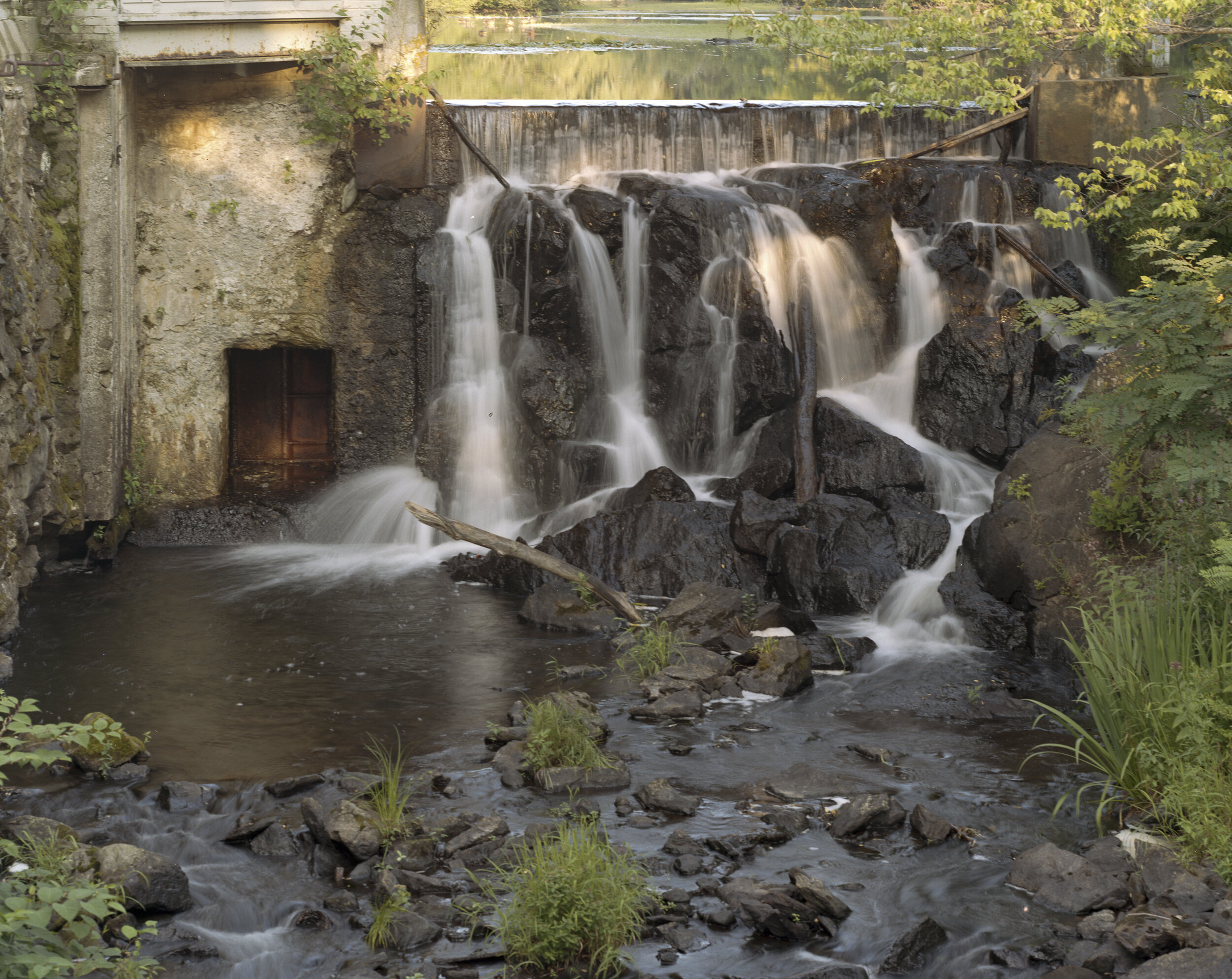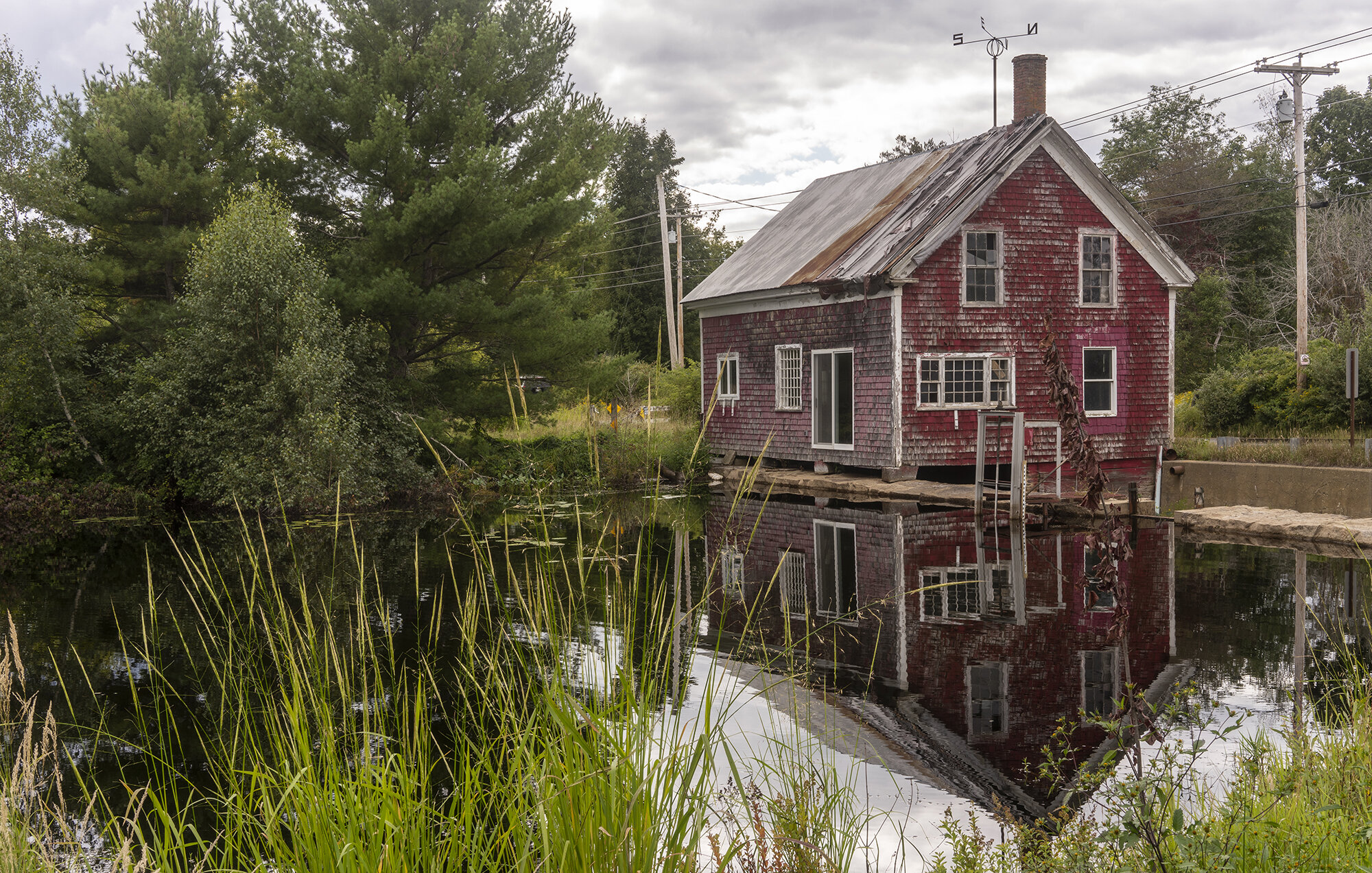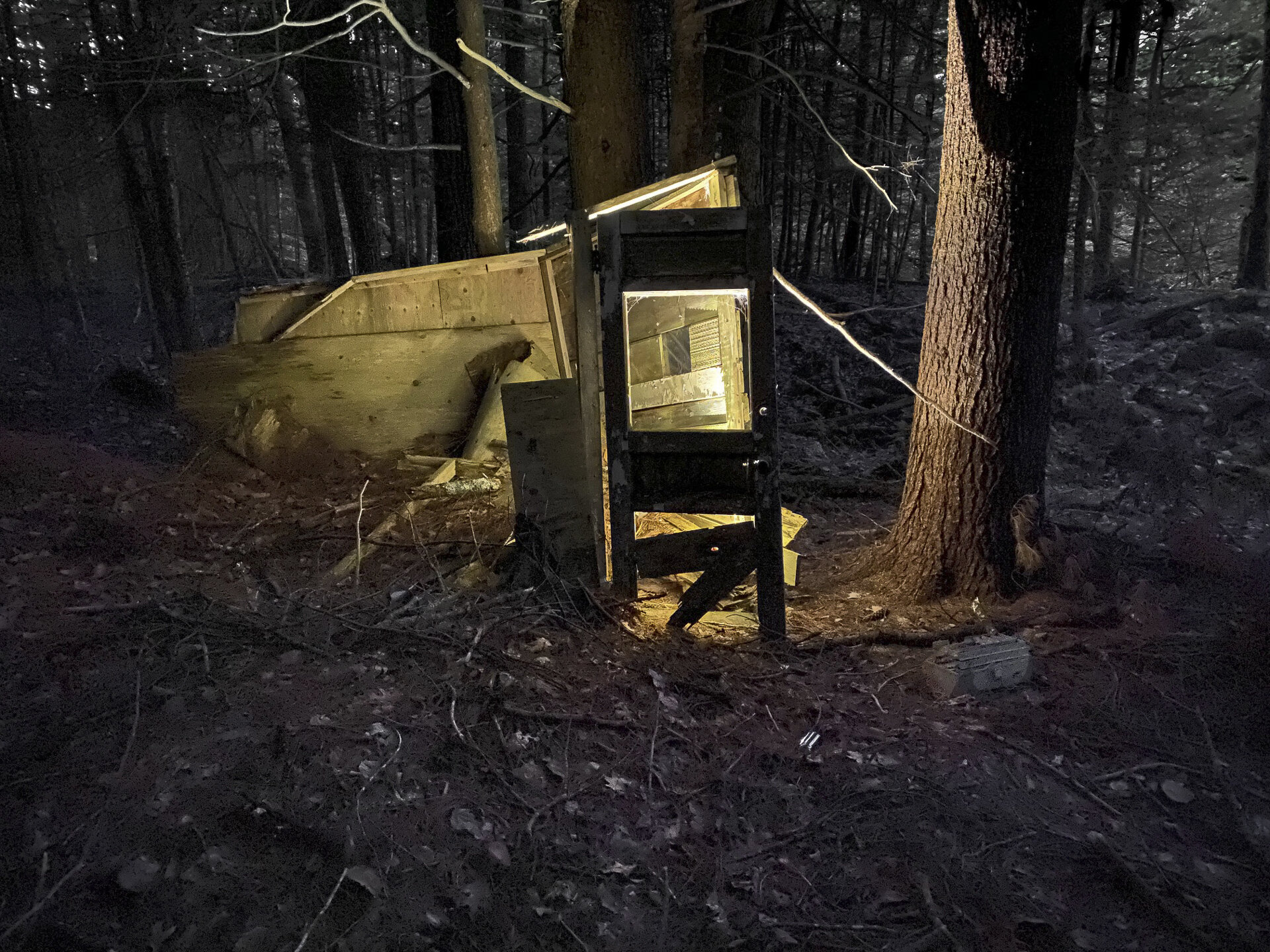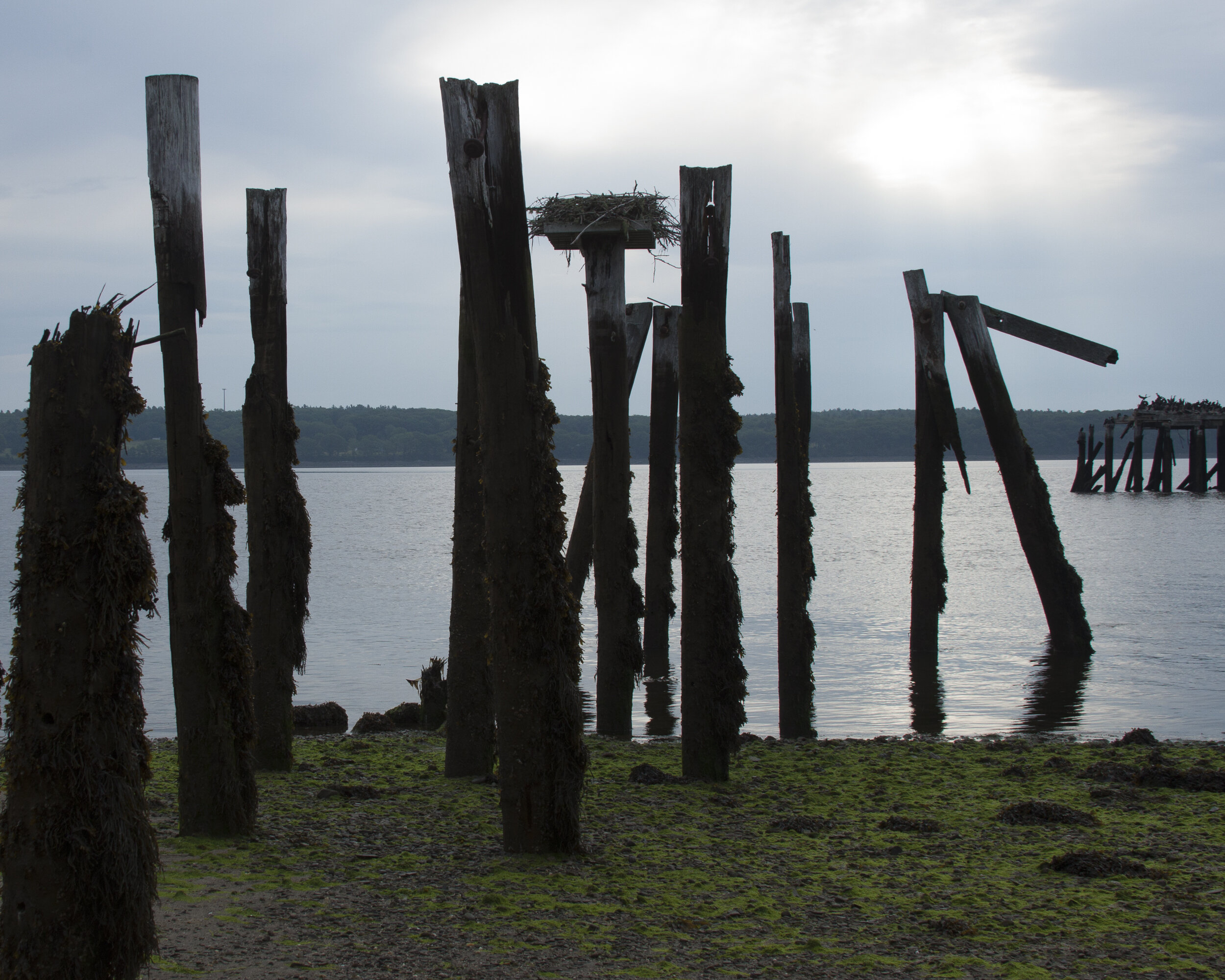What Remains
I am a history detective, exploring what remains on the land. These photographs show the remains of once vibrant industries such as quarrying, hydro power, mills, railroads, and manufacturing. The sense of time passing is conveyed in how nature has taken over and softened and, in some cases, almost erased a once harsh environment. Although there are no people visible in these images, I hope that they will invoke curiosity and wonder about the scale and scope of these endeavors and imagine the people who made a living there.
What Remains | Postcards
Many photographers have made postcards, Walker Evans and Stephen Shore among them. I had written field notes about the history of the places I photographed in the What Remains project. I saw postcards as a way to combine words and photographs, place my work in the hands of viewers, and seek their collaboration in the form of responses.
In my research on postcards, I became interested in "Real Photo" postcards. Around 1903 Kodak introduced the 3A Folding Pocket Kodak camera. It used postcard-sized negatives that, once exposed, could be printed onto paper formatted with a postcard back. In the days before telephones, when mail in large urban areas was often delivered three times a day, and you could mail a postcard for a penny, these postcards were often used for brief communications to friends and family far away like we use texts.
As a 21st century response to Real Photo postcards, I set up an InDesign template and printed my postcards, self-addressed them, and mailed them in an envelope to friends and family. In the accompanying letter, I asked them to write a message and take the postcards to their local post office to have them hand stamped before mailing them back. I was surprised by the recipients' creativity. I made 22 different postcards and eight or more of each. Over 85 postcards were returned, some from as far away as Israel, Greenland, and Estonia. The fact the most were intact is a tribute to the USPS. I display them in a commercial postcard rack so viewers can pick them up and read them. Like many antique postcards, what is written on backs is sometimes more interesting than the photograph on the front.

